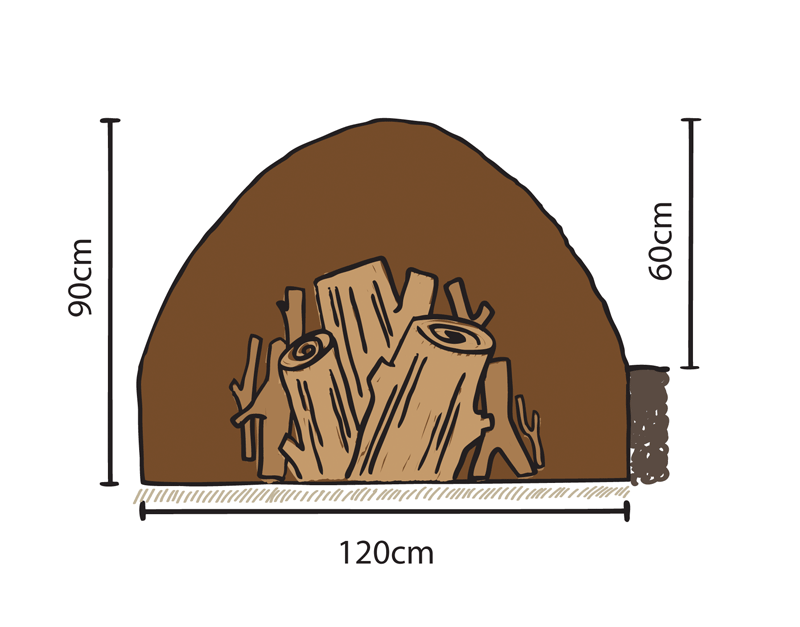When building hugels, it’s helpful to think like a forest. Rotting trees fall on the forest floor, leaves, bark, and sticks layer on top of this. Worms, fungi and animal droppings have their place in creating rich soils.
Size
The optimum size for a hugel is at least 3feet, or 90 centimetres tall. Shorter than this will make the hugel less water efficient. Taller hugels can be trickier to stabilse, but taller is definitely better. A width of 120cm wide is ideal so that you can reach the centre of the hugels easily.
Orientation
I build my hugels running east-west, with a sunny side facing north (south in the Northern hemisphere). This works well because of the contour of my land.
Others recommend building hugels running north-south.
Think like a forest
The key to a successful hugel is layering and variety. Each material will breakdown at a different rate. Wood that rots over a long time will give the bed longevity, whilst rapidly decaying matter will give quick gains in nutrients and water retention.
The best rule of thumb is to think like a forest.
It takes an ecosystem to produce a forest:
• all the trees in a forest living, dropping branches and leaves, then dying and decaying into the soil.
• All the understory doing the same on a smaller scale.
• Birds, mammals and lizards living in the debris, digging, eating, and producing waste.
• Worms, insects, fungi, and bacteria all breaking down the organic matter on the forest floor
Components
Layer 1, start with large hardwood stumps 30-60com tall, and as big as 30-40com diameter. Mix with smaller stumps and large branches of softwood and hardwood.
Fill the gaps with leaves, dirt, woodchip and smaller branches. This will fill the air pockets to prevent the hugel from sinking too much as it decomposes, but also allows pathways for worms, mycelium and other soil microbes.
Design considerations
The construction of the hugel affects the effectiveness of the bed.
To make the most of your hugelkultur beds, I recommend the following:
• Your beds should be a minimum of 3 feet tall (90cm tall), but the taller the hugels are, the more effective they will be.
• You should have a good number of upright logs to 2 feet to wick water to the top of the hugel
• in fast draining soil, put a layer of cardboard down to make a reservoir to give the lower layers of wood time to decompose and trap the water.
• combine worm culture with hugelkultur (it’s a match made in heaven)
• use a range of different sized organic matter. Larger logs will decay slower, giving your hugel longevity, smaller and more rotted materials will provide fast gains in nutrient, water retention and biological activity.
• dig the first foot of your hugel into the ground, or build raised woodchip paths either side of your hugels to maximise water trapped adjacent to the hugel.
• align the hugels East/West, to create a sun trap on the sun side (north for Southern hemisphere, South for northern hemisphere).
• Keep your above-ground hugel width a maximum of 1.2 metres wide. Wider makes it hard to access the centre of the hugel without stepping on plantings.
• Grade your wood. Largest, and therefore slowest decaying material at the bottom. Most rotted organic material (ie. compost) at the top.
• Do not use green wood unless you put a layer of nitrogen rich material on top of it. Ideally use wood that is a year or more old, but rotting wood will break down very quickly, so put that closer to the top of your hugel.
• Watering the hugels well during construction “charges” the hugels with a water resource. If you’ve done your job, much of this water will stay in the lower levels of the hugel for quite some time and contribute to the decay of the larger logs.
How to build a hybrid hugel
Once you’ve considered all of the design issues for your site, you’re ready to build your hugel.



